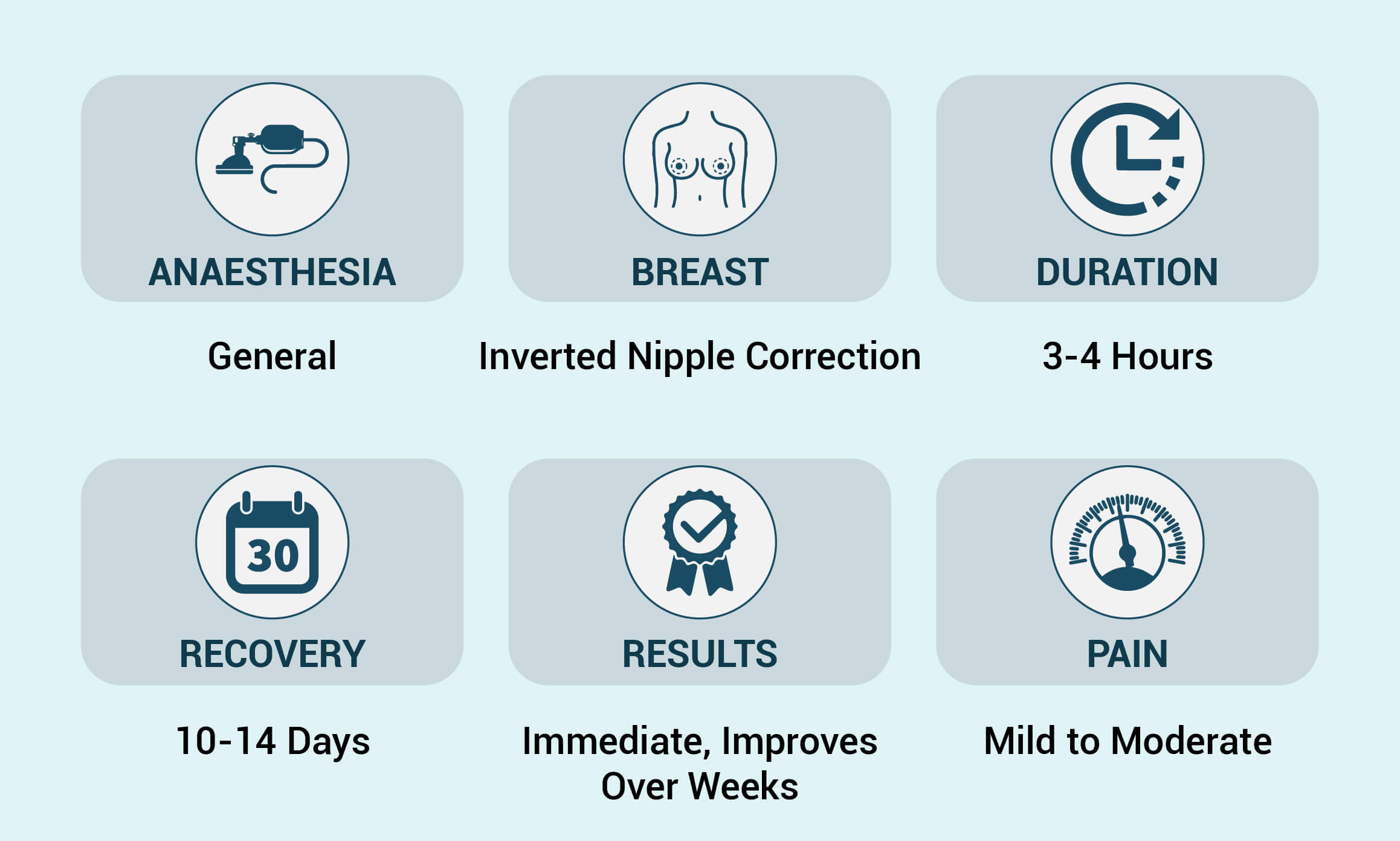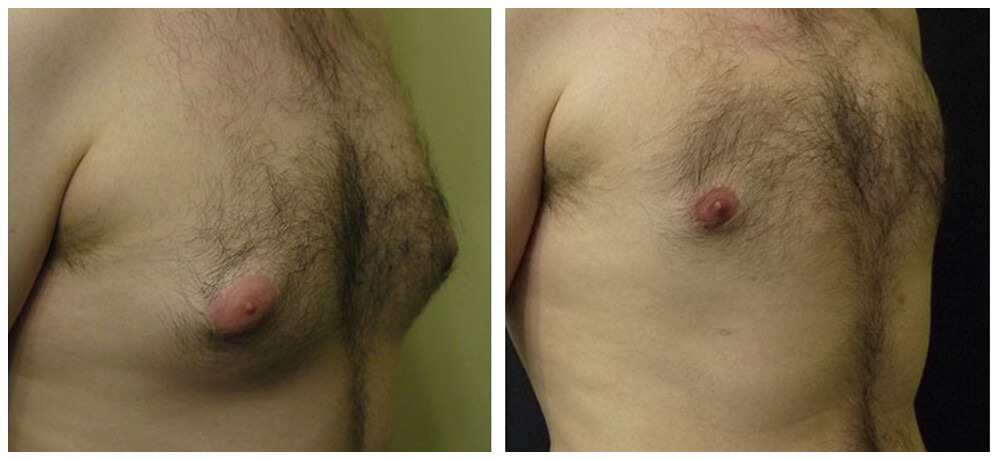Inverted Nipple Correction Surgery Treatment in Mumbai
Inverted nipples can cause embarrassment, self-consciousness, and functional difficulties with breastfeeding or erogenous sensations. As part of a Mommy Makeover, women can also have their nipples corrected if they notice they are becoming increasingly inverted after having children. The inverted nipple correction can improve the projection and aesthetics of the nipples.

What is an Inverted Nipple?

An inverted nipple (occasionally invaginated nipple) is a condition where the nipple, instead of pointing outward, is retracted into the breast. In some cases, the nipple will be temporarily protruded if stimulated. Many patients are born with inverted nipples.
These may get worse with advancing age. Inverted nipples may cause cosmetic concerns and can interfere with breastfeeding.
The sudden appearance of inverted nipples can signify possible breast cancer. You should consult your doctor if this applies to you.
If you are seeking professional assistance for inverted nipple correction in Mumbai. Then you can visit The Plastic Surgeons clinic. Our Surgeon will be well-versed in the latest surgical techniques and approaches to address this issue, providing personalized treatment plans to help patients achieve their desired outcomes.
What Cause Inverted Nipple?
Inverted nipples are nipples that turn inwards instead of outwards. They are more common in women but can also occur in men. Inverted nipples can be caused by several factors, including:
Congenital:Inverted nipples may be present at birth. This is a common cause of inverted nipples.
Tight Areola:A dark area around the nipple. In some people, the areola is so tight that it can pull the nipple inward.
Scarring:Scarring from injury or surgery can sometimes cause inverted nipples.
Breast Cancer:Inverted nipples can be a sign of breast cancer, but this is rare. If you have inverted nipples and are concerned about breast cancer, you should see your doctor.
There are three degrees of severity:
Grade 1:These nipples are occasionally inverted but will revert spontaneously. Surgery is not required for this group.
Grade 2:Nipples in this category will not evert spontaneously but can be manually pulled out. Surgery can benefit patients in this category.
Grade 3:This is the most severely affected group. The nipples cannot manually be pulled out. Surgery is the only method for correction in this group.
What are the Benefits of Inverted Nipple Surgery?
For patients who wish to address what may have been a lifelong concern, inverted nipple correction offers a wide range of benefits. By projecting the nipples outward, the shape and appearance of the nipples can be improved significantly.
Enhance the overall appearance of the breasts.
Relieve insecurity about the appearance of nipples.
Enhance breastfeeding abilities
How to prepare for inverted nipple surgery
Meet with your surgeon:It is essential to meet with your surgeon to discuss your expectations and to learn about the procedure. Your surgeon will also be able to answer any questions you have.
Get a medical clearance:You will need a medical clearance from your doctor before having inverted nipple surgery. This will ensure that you are healthy enough to undergo the procedure.
Stop smoking: Smoking can increase your risk of complications after surgery. If you smoke, you should stop smoking at least two weeks before your surgery.
Avoid taking blood thinners:Blood thinners can increase your risk of bleeding during and after surgery. If you are taking blood thinners, you must stop taking them before your surgery.
Plan for your recovery:After surgery, you must take some time off from work and other activities. Your surgeon can give you more specific instructions about your recovery.
Inverted Nipple Treatment Options:
Nipple Piercing:
Conservative and effective method for mild to moderate cases.
The procedure can be performed under local or general anesthetic.
A 'barbell' device is inserted from 3 to 9 o'clock to stretch contracted nipple ducts.
The piercing must be left continuously for 6 months to maintain the correction.
Ducts remain stretched after removal, correcting the inverted nipples.
Least destructive to the ducts, reducing the risk of permanent scarring and sensory loss.
Low incidence of permanent damage or division of milk ducts.
Less likely to interfere with breastfeeding compared to other surgical techniques.
Breast Augmentation:
Suitable for correcting mild cases of inverted nipples.
Breast implant pushes breast tissue forward, increasing the length of tethered and shortened ducts.
Corrects inversion by creating more projection in the nipple area.
Surgical Techniques (Used when piercing or breast augmentation fail):
Cutting the ducts: More invasive and carries a higher risk of impairing breastfeeding.
Reserved for severe cases of inverted nipples.
It's essential for individuals considering any treatment to consult with a qualified healthcare professional who can assess their specific condition and recommend the most suitable approach based on their medical history and severity of nipple inversion.
 WhatsApp
WhatsApp